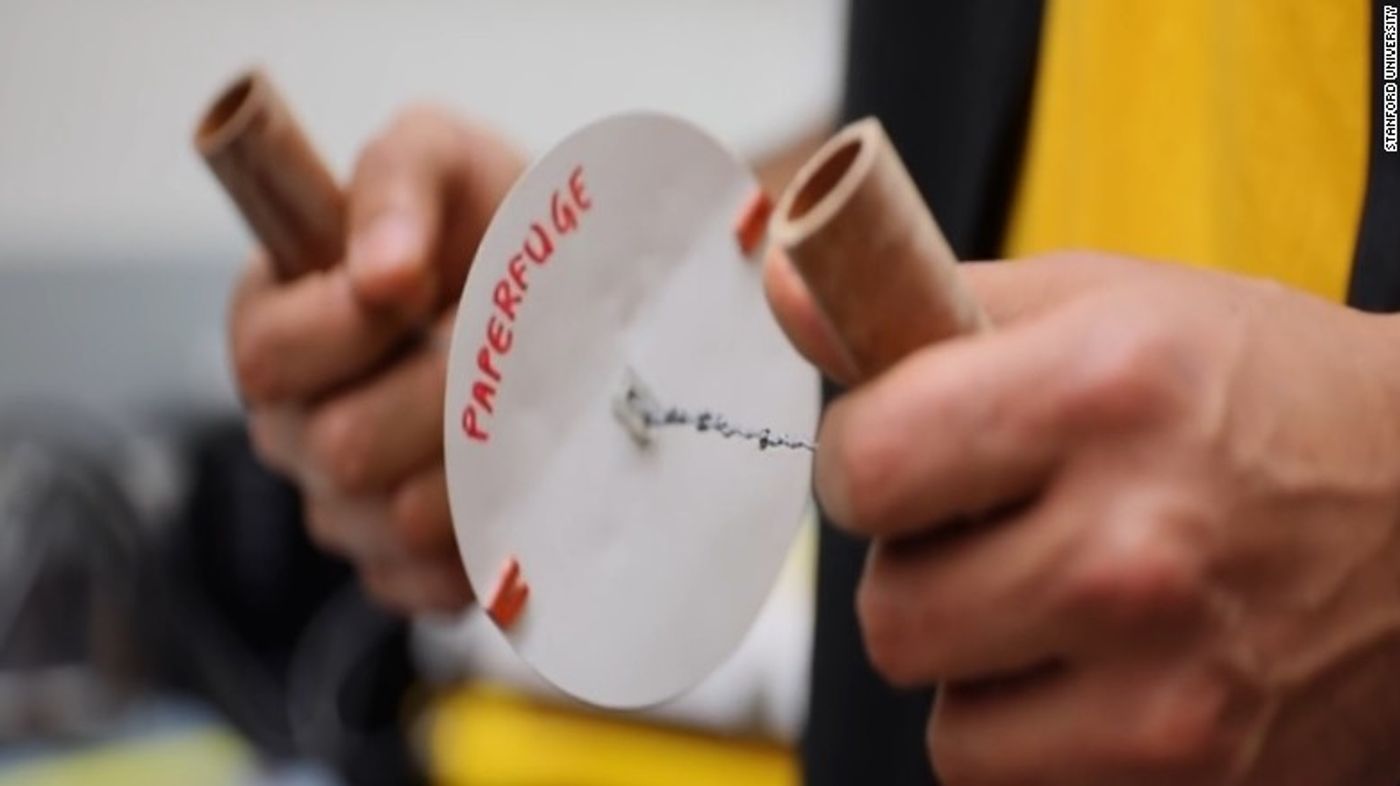Handheld Paper Centrifuge Costs a Mere 20 Cents
Visit any modern diagnostic labs and you’ll likely find at least a few centrifuges, machines that exploit centrifugal force to separate fluids into different layers based on densities. However, in less developed parts of the world, simple machines like these are a rarity in the labs. As a result, a test that can be done in a few hours can take days or weeks. To help solve this problem, a bioengineer at Stanford University developed a centrifuge device that’s inspired by an ancient toy.
When fluids are spun fast enough, they separate into distinct layers. In the field of medicine and diagnostics, these layers may reveal the presence of pathogens in the blood, urine, or even stool samples.
“A couple of years ago, I experienced a moment in Uganda while talking to primary health workers, which made me realize centrifuges are a critical part of a diagnostics lab infrastructure, and they were missing from most places," recalled Manu Prakash, the study’s senior author. "Even places that have them, either they break in the field or, because of no electricity, are not even used. I saw one being used as a doorstop.”
"I came back and began looking for a solution that would be human-powered and cost pennies so that a billion people who live with no infrastructure and resources can afford them,” said Prakash of his motivation.
Inspired by hand-held but fast-rotating toys, Prakash and his team began analyzing yo-yos. They appreciated the speed of the yo-yo, but deemed it too difficult to master universally.
Through many more trials and errors, the team landed on a whirligig, a spinning paper toy that dates back to 3300 B.C. With just simple paper discs, fishing line, wooden handles, and tubes to hold the blood samples, the team built their 20-cent prototype. Incredibly, the ultralow-cost device can spin up to 125,000 revolutions per minute, which is the equivalent of 30,000 g. This is all achieved through manual power with human hands.
"To the best of my knowledge, this is the fastest-spinning rotational motion powered by human hands,” said Prakash. He and his team have already applied the device, which they call Paperfuge, for the Guinness World Records.
The Paperfuge cannot be more starkly different than the traditional centrifuge. Whereas traditional centifuges weigh thousands of pounds, the Paperfuge is merely 2 grams, which makes it superior in terms of portability. Whereas centrifugues cost thousands of dollars, require expensive parts, and is powered by electricity, the Paperfuge cost 2 dimes, is disposable, and is electricity- and battery-free.
But just because it’s cheap and inspired by a toy doesn’t mean the Paperfuge is a toy. In testing, the team demonstrated the device’s ability to separate pure plasma from blood in 1.5 minutes. Malaria parasites were isolated from blood in 15 minutes.
“Ultracheap, power-free centrifuges should open up opportunities for point-of-care diagnostics in resource-poor settings and for applications in science education and field ecology,” the authors conclude.
"It's crucial to think about democratizing scientific tools to bring them to people all around the world," Prakash said. "All aspects of scientific and measurement tools should be re-examined to see how those fundamental principles can be re-engineered in new forms that are adaptable to a broader context beyond a well-funded lab in an academic settings. People have a lot of hunger for science, so it needs to be accessible."
Additional sources: CNN









